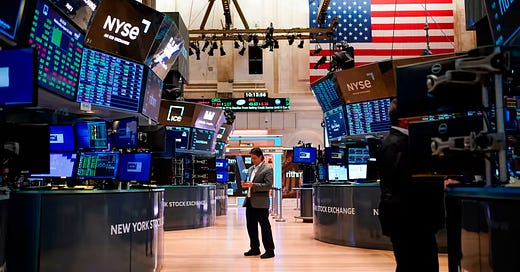A few months ago the markets were looking dire and scary. It is always darkest before dawn. Like a broken record, I had repeatedly and emphatically stated that this is not the time to be bearish and why I thought the markets are a good buy. The markets are up 17% since the bottom we made on June 16th and 17th.
When I talk about equity markets, I mostly reference the S&P 500. The S&P 500 is a market capitalization-weighted index, unlike the Dow which is a price-weighted index. Therefore the S&P is a better barometer of the economy.
Now, where do we go from here? Many market pundits like Dr. Michael Burry, Jeremy Grantham, and Jim Rogers think that this is a bear market rally and the market is in for much bigger falls. But I beg to differ and will take the opposite view. The easy part of the rally may be over and we may be in for some back and forth trading before we move higher again. Let me make the case for much higher levels again.
We have been very concerned about inflation, higher interest rates, pandemic travel restrictions, geopolitical unrest, above-average stock market valuations, and generalized fear over political leadership. We couldn’t have had a much worse mix of negativity for stock markets.
But this is nothing new. The specific factors that will drive markets up and down will mostly differ but the US and other countries have dealt with similar situations before.
However, there are some differences. For example, the cause of inflation today is not exactly the same as it was in the 1970s. Back then we didn’t have access to the internet, smartphones, or personal computers, whereas now there is a constant flow of information wherever you are placed on the globe.
It all boils down to fear and greed and how we measure that in the context of current positioning and present sentiment. This can cause extremes and even unrest. The emotional response to market uncertainty is always an opportunity for trained and experienced market participants. That separates the boys from the men.
There is still a lot of fear in the markets and the hedge funds that run big institutional money are wrongly positioned. Finally, this fear will subside, and when it does there will be an overwhelming amount of FOMO (fear of missing out).
Let us look at the markets in perspective. Since 1928 there had been only 5 times in history that the S&P 500 index fell at least 15% in the first half of a year. This year marked the 6th. At the end of June this year it was down 20.6% while the tech-heavy NASDAQ was down close to 30%.
Now hear the good news. The last five times this happened in history the S&P 500 rallied over the following six months with an average gain of close to 24%. If that trend stays true, we should be getting close to the all-time high at 4820 or even higher. I do not want to make any predictions but one thing I am certain about is we will have increased volatility for the rest of the year as we are dealing with a high inflationary environment.
Going back to the Fed: is the Fed serious about controlling inflation? Yeah, right! they may be serious - about paying lip service - they really don’t have the means.
We are with an 8.5% inflation rate and the Fed funds rate is at just 2.5%. The Fed Chairman thinks we are at neutral rates and he has stated that they will no longer ‘guide’ on policy but rather take things meeting by meeting, depending on the data. Not really a move by past precedence when measures were taken to raise short-term rates above the rate of inflation. The Fed currently is nowhere close.
To top it up after telling us that they would aggressively drain the liquidity, they have done just a small fraction of their scheduled plan so far. Not to forget all the new more than trillion dollars that are being pumped into the economy in the name of CHIPS, PACT, and inflation Acts.
Why do you think the Fed is acting this way? What the Fed doesn’t want to talk about is that the US debt as a percent of GDP had doubled since the GFC. If the FED were to raise rates by 600 basis points, the annual interest payout on the debt will increase to over $1.5 trio from the current $400 bio.
So what is the Fed going to do? Plain and simple. Inflate the growth and inflate away the debt relative to the size of the economy. If the dollar comes down in a big way which I think should happen it will be the best of both worlds. So stocks are the place to be in.
So where do we invest? I think the biggest opportunities are in the emerging markets, particularly India. Just stay out of China as nobody really knows what’s happening there. There is so much happening in the field of dramatically increasing the transaction speed, maximizing yields, and reducing costs. Many cryptocurrencies are at the cutting edge of new innovations in payments and the way we trade stocks. Once regulations and laws around cryptocurrencies are in place you will see a massive flow of institutional investors investing 3 to 5% of their massive portfolios. That will include sovereign wealth funds, pension funds, and endowment funds. If one has to pick a single stock from the US, I think Apple is going to be the one. They are going to rock the world with some of their new inventions and new areas of business activities.
If you received value from this post, and you’d like to send some back, or if you’d like to signal to me to continue spending time on these types of explorations, feel free to buy me coffees (thank you!):
So, there we go. Thanks for reading Breezy Briefings. If you enjoyed this, I'd really appreciate it if you could take a second and tell a friend. Honestly. It makes such a big difference.
Forward this email. Recommend the newsletter. Share on Twitter, WhatsApp, Telegram, LinkedIn, Slack, wherever!
Join Breezy Briefings’ Official Telegram Channel: https://t.me/BreezyBriefings
Abraham George is a seasoned investment manager with more than 40 years of experience in trading & investment and multi-billion dollar portfolio management spanning diverse environments like banks (HSBC, ADCB), sovereign wealth fund (ADIA), a royal family office and a hedge fund.



